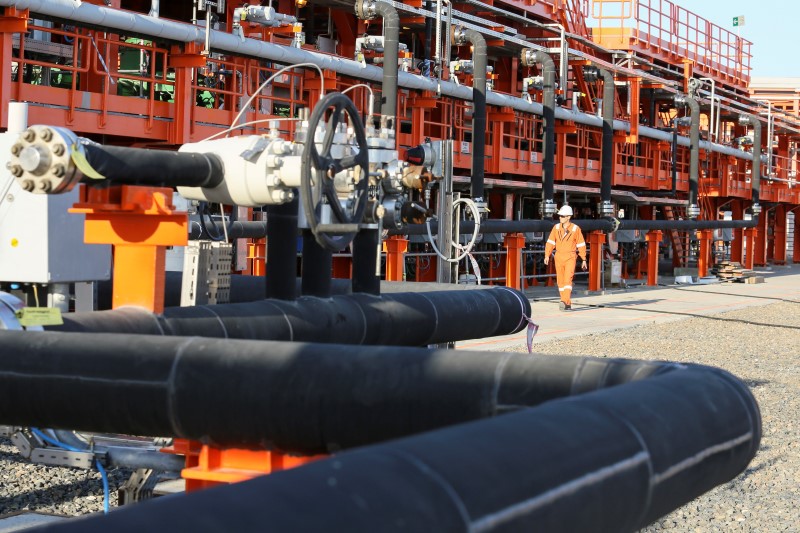Investing.com - West Texas Intermediate oil held onto gains in North American trade on Thursday, after data that showed that oil supplies in the U.S. registered a larger-than-expected inventory draw.
Crude oil for February delivery on the New York Mercantile Exchange gained $0.14, or 0.23%, to trade at $61.77 a barrel by 11:02AM ET (16:02GMT) compared to $61.81 ahead of the report.
The U.S. Energy Information Administration said in its weekly report that crude oil inventories fell by 7.419 million barrels in the week ended December 22. Market analysts' had expected a crude-stock draw of 5.148 million barrels, while the American Petroleum Institute late Wednesday reported a supply draw of 4.992 million barrels.
Supplies at Cushing, Oklahoma, the key delivery point for Nymex crude, decreased by 2.441 million barrels last week, the EIA said. Total U.S. crude oil inventories stood at 424.5 million barrels as of last week, according to press release, which the EIA considered to be “in the middle of the average range for this time of year”.
The report also showed that gasoline inventories increased by 4.813 million barrels, compared to expectations for a build of 2.182 million barrels, while distillate stockpiles rose by 8.899 million barrels, compared to forecasts for an increase of 0.477 million.
The report came out one day later than usual due to the New Year’s holiday.
Elsewhere, on the ICE Futures Exchange in London, Brent oil for March delivery fell $0.14, or 0.21%, to $67.70 by 11:07AM ET (16:07GMT), compared to $67.87 before the release.
Meanwhile, Brent's premium to the WTI crude contract stood at $5.94 a barrel by 11:13AM ET (16:13GMT), compared to a gap of $5.21 by close of trade on Wednesday.
Oil prices have been holding near their highest level since May 2015 this week as recent unrest in Iran supported prices.
Six days of anti-government protests marked the biggest challenge to the country's clerical leadership since 2009, while Iran's Revolutionary Guards deployed forces to three provinces in order to put down the rebellion.
So far the unrest has had little impact on Iranian oil production with experts suggesting that, beyond worker strikes, the country’s oil resources are located far from where protests are currently taking place.
Crude prices have also been underpinned by production cuts led by the Organization of the Petroleum Exporting Countries (OPEC) and non-OPEC producers led by Russia who agreed at the end of November to extend current oil output cuts until the end of 2018.
However, concerns remain that increasing production levels from U.S. shale production will derail OPEC’s efforts to rebalance markets.
Elsewhere on Nymex, gasoline futures for February delivery fell 1.7 cents to $1.7897 a gallon by 11:11AM ET (16:11GMT), while February heating oil dropped 1.2 cents to $2.08 a gallon.
Natural gas futures for February delivery traded down 1.4 cents to $2.994 per million British thermal units.
